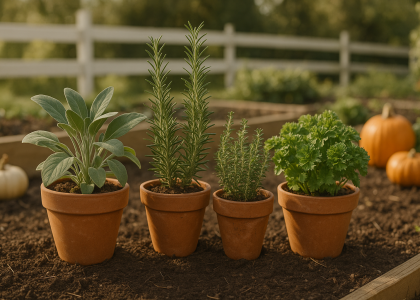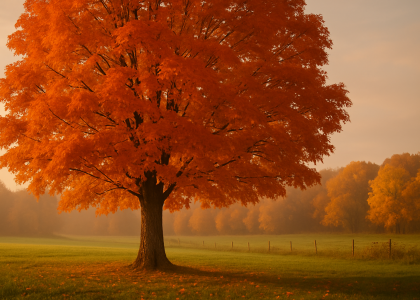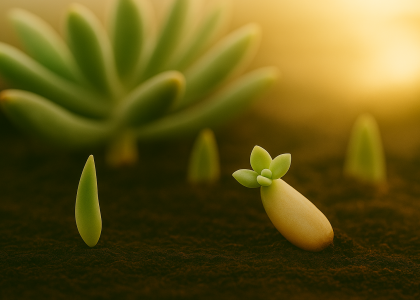Why Start with Flower Families?
When designing a beginner-friendly pollinator garden, it’s easy to get overwhelmed by all the plant choices. A simple solution? Start with pollinator-approved flower families. These plant groups are reliable, widely available, and proven to attract bees, butterflies, and hummingbirds.
What are the easiest flowers to start a pollinator garden? Start with Aster, Mint, Milkweed, Verbena, and Pea families—they bloom reliably, attract a wide range of pollinators, and are beginner-friendly.
Below are the best beginner-friendly families to build your pollinator patch. These flowers are beautiful, bloom over long periods, and require minimal fuss.
1. Aster Family (Asteraceae)
Top Picks:
- Echinacea (coneflower) – Zones 4–9, summer to fall
- Rudbeckia (black-eyed Susan) – Zones 3–9, midsummer to frost
- Coreopsis – Zones 4–9, late spring through summer
- Gaillardia (blanket flower) – Zones 3–10, late spring to fall
Why It Works:
- Daisy-like flowers are easy landing pads for pollinators
- Long bloom season and drought-tolerant
- Easy from seed, most are native to North America
Beginner Tip: Start with coneflowers and rudbeckia for long-lasting color. All are suitable for in-ground and container planting.
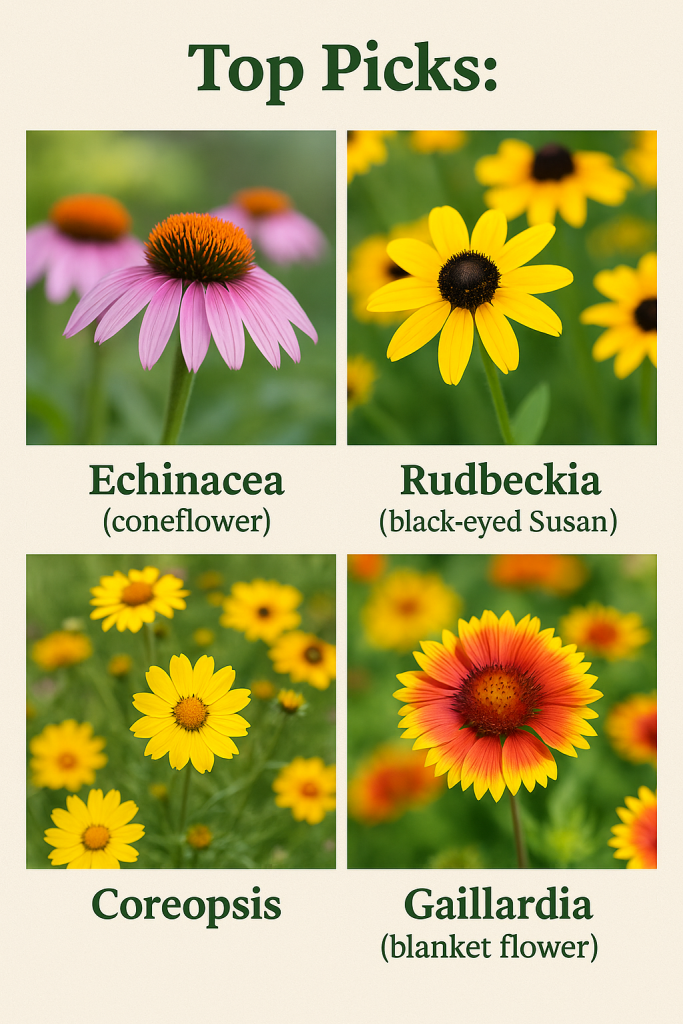
2. Mint Family (Lamiaceae)
Top Picks:
- Salvia – Zones 4–10, summer bloomers
- Bee balm (Monarda) – Zones 4–9, midsummer
- Catmint (Nepeta) – Zones 3–9, spring to fall
- Lamb’s ear (Stachys byzantina) – Zones 4–8, late spring
Why It Works:
- Tube-shaped blooms attract long-tongued bees and hummingbirds
- Strong fragrance deters deer but attracts beneficial insects
- Many are deer-resistant and heat-tolerant
Beginner Tip: Monarda and catmint bloom early and bounce back from neglect. Great for borders and herbaceous cottage-style beds.

3. Milkweed Family (Apocynaceae: Subfamily Asclepiadoideae)
Top Picks:
- Asclepias tuberosa (butterfly weed) – Zones 4–9, summer
- Asclepias incarnata (swamp milkweed) – Zones 3–8, midsummer
Why It Works:
- Monarchs lay eggs only on milkweed
- Bright, nectar-rich blooms for butterflies and bees
- Native and low-maintenance in well-draining soil
Beginner Tip: Avoid tropical milkweed (A. curassavica) in cooler zones; stick with native types.
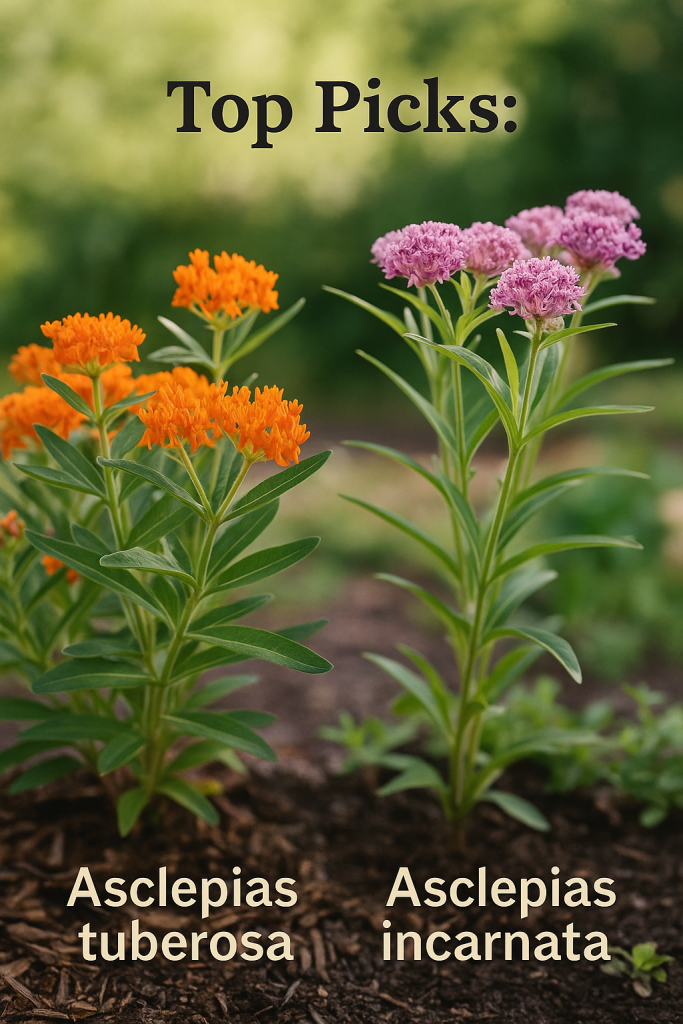
4. Verbena Family (Verbenaceae)
Top Picks:
- Verbena bonariensis – Zones 7–10, self-sowing annual elsewhere
- Lantana – Zones 9–11, annual in cooler zones
Why It Works:
- Continual blooms through heat and drought
- Loved by bees, butterflies, and hummingbirds
- Lantana adds bold color; verbena adds airiness
Beginner Tip: Try verbena in containers and lantana in sunny beds. Use in Zones 6–11 for best results.
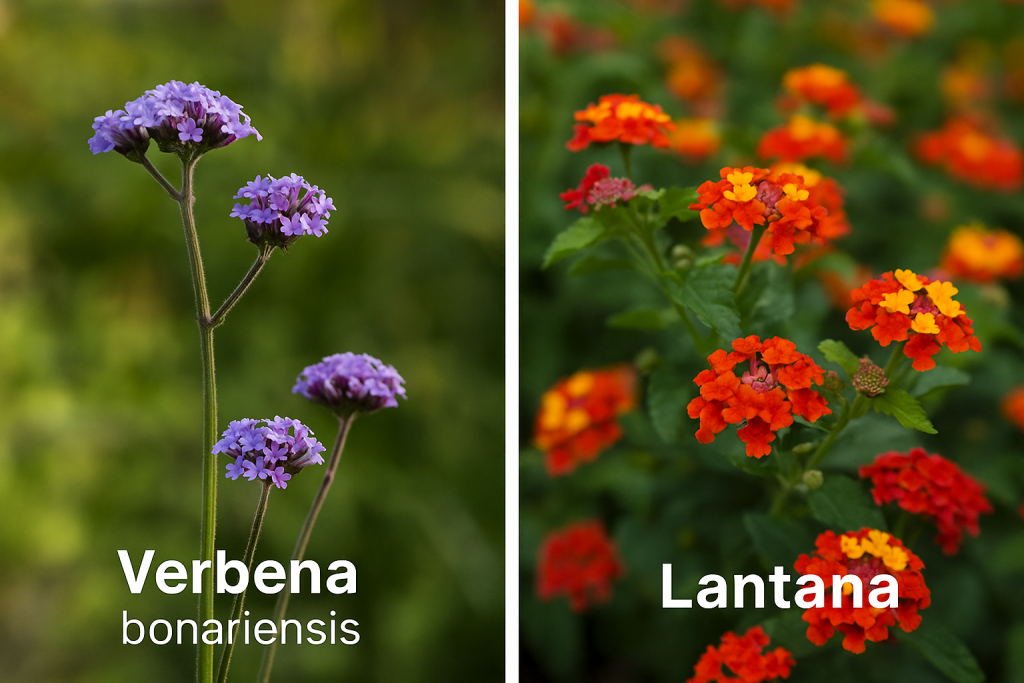
5. Pea Family (Fabaceae)
Top Picks:
- Lupine – Zones 4–8, spring
- Clover (Trifolium spp.) – Zones 3–9, cool season
- Baptisia (false indigo) – Zones 4–9, late spring
Why It Works:
- Nitrogen-fixing roots improve soil health
- Unique flower shapes for bee access
- Many native options that naturalize well
Beginner Tip: Clover is great for small patches, pollinator paths, and lawn alternatives.
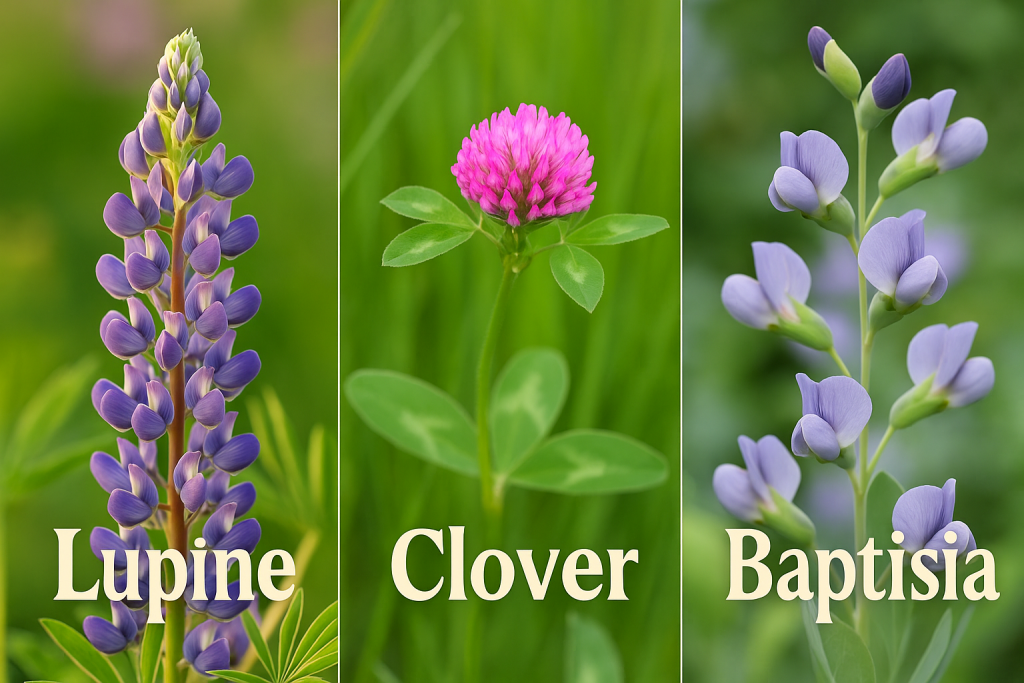
Final Tips for New Pollinator Gardeners
- Group the same species in clumps of 3–5 plants for better visibility
- Avoid pesticides—even organic types may harm insects
- Choose single-flowered varieties (not double) for easier nectar access
- Provide a shallow water dish with pebbles
- Combine families to stretch bloom seasons and support more pollinators
Build Your Garden, One Family at a Time
Choosing plants by family is a simple way to create a balanced, effective pollinator garden. These floral dynasties offer blooms, habitat, and joy for gardeners and beneficial insects alike.
Download our free guide: “Beginner Pollinator Garden Families”
Pin this to your “Pollinator Gardening 101” board
Share your favorite flower family @Greenmuse and vote your match:
🔘 #TeamAsteraceae
🔘 #TeamLamiaceae
🔘 #TeamMilkweed
🔘 #TeamVerbena
🔘 #TeamFabaceae
🔘 #MixAndMatchFamily


